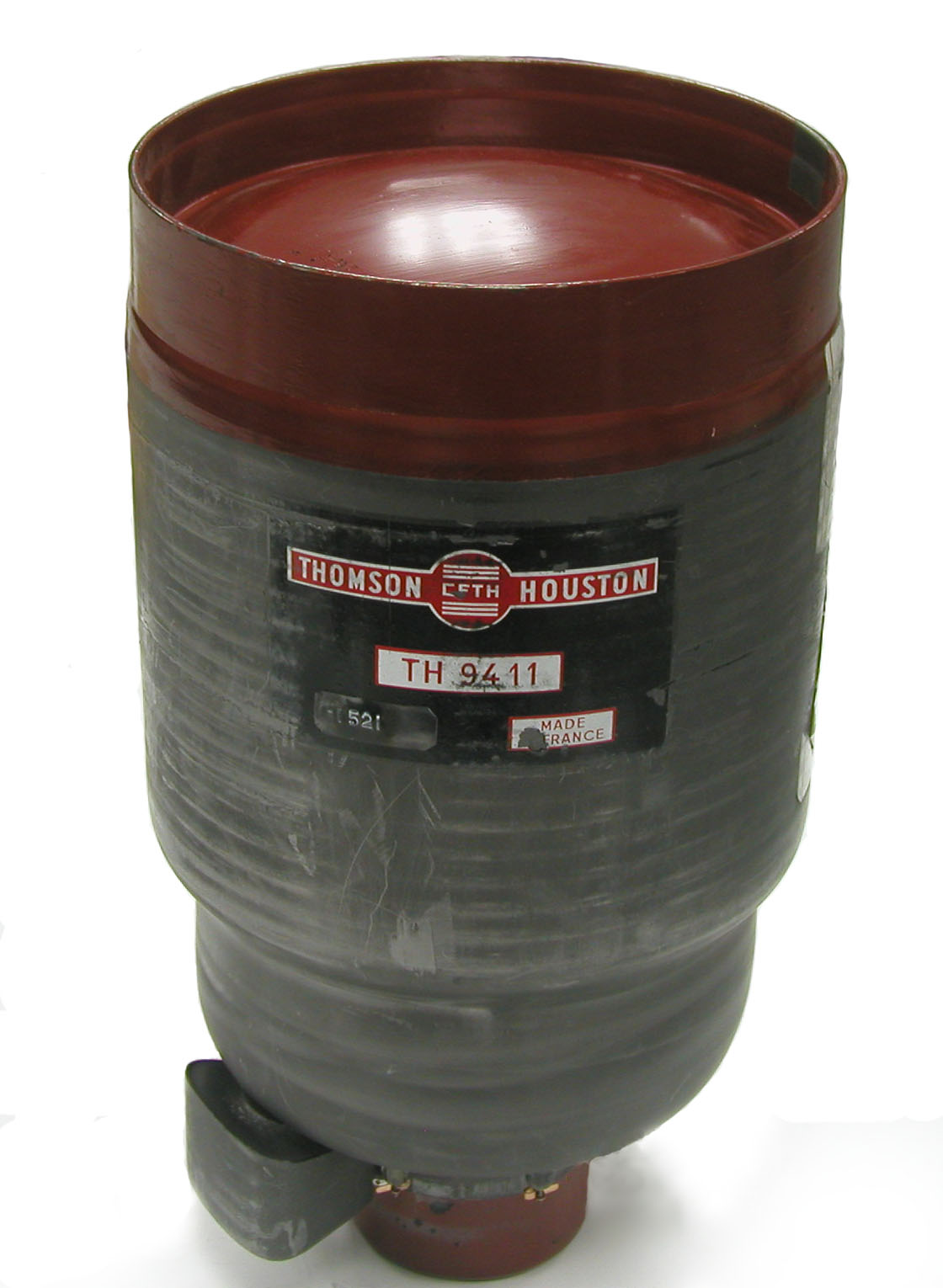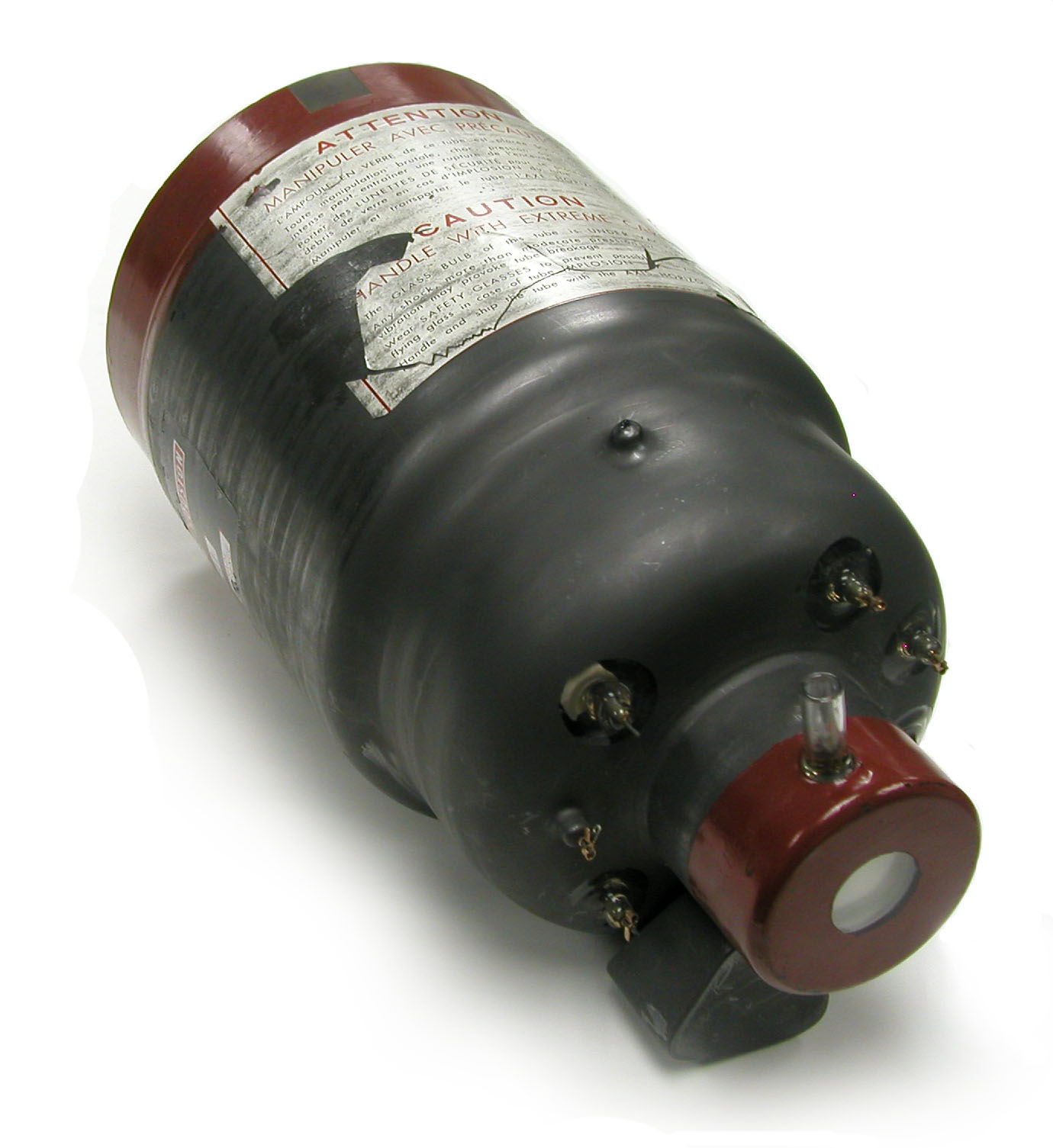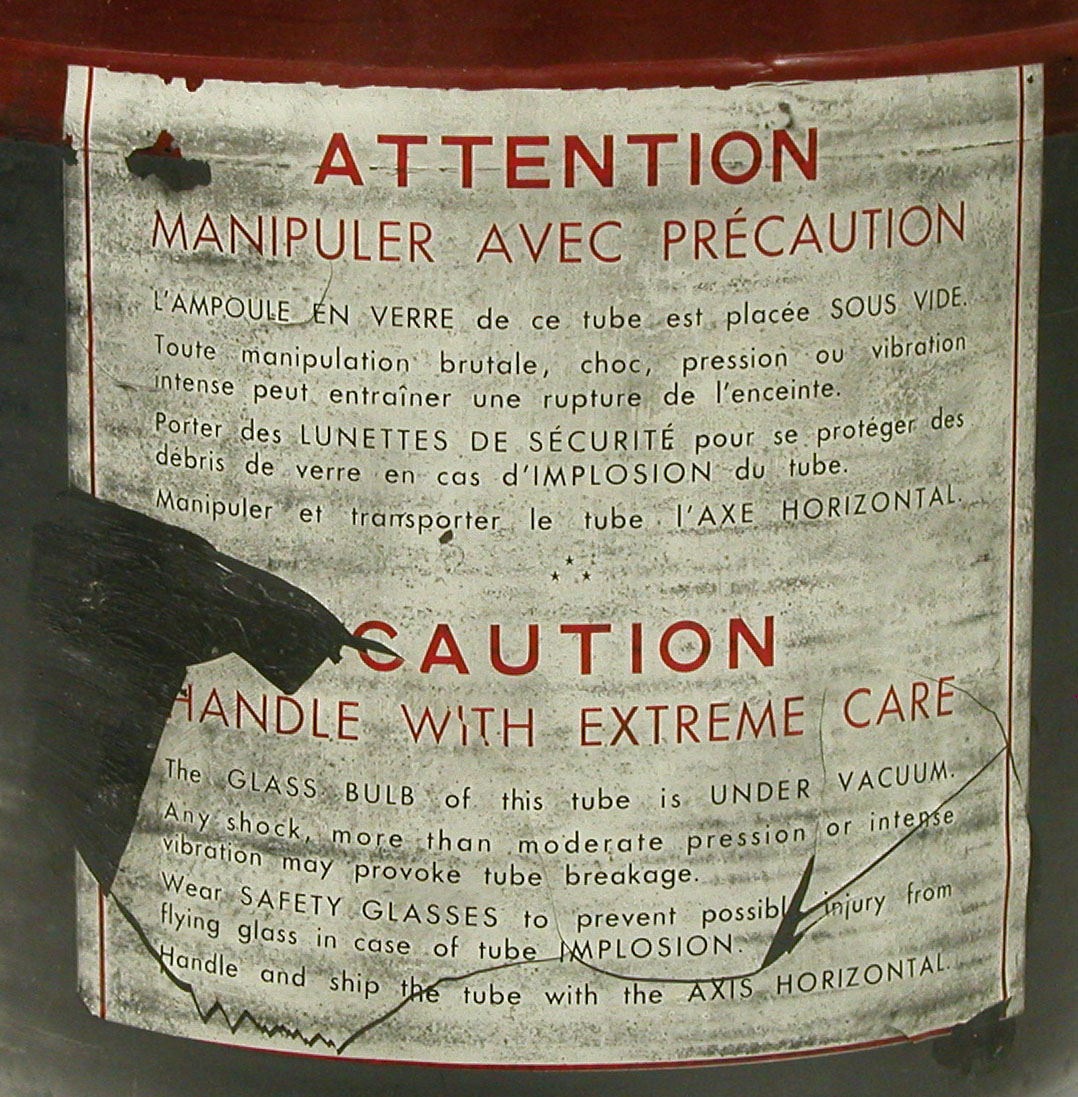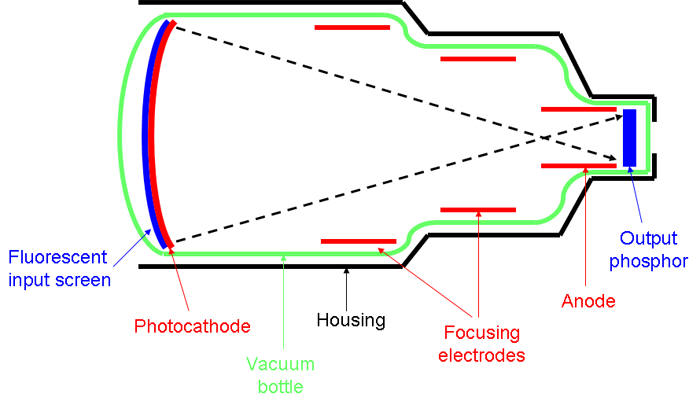Image Intensifier (Converter) Tube (early 1960s)


This image intensifier tube was manufactured by Compagnie Française Thomson-Houston (CFTH), probably in the early 1960s. CFTH began as the French sister company of the Thomson-Houston Electric Company of Lynn, Massachusetts. The latter subsequently became General Electric.

The first image intensifier tube was constructed in the late 1940s by John Coltman at the Westinghouse Research Laboratories near Pittsburgh. In 1952, Westinghouse started marketing the unit which they called the Fluorex. At about the same time in Holland, Philips began producing a similar tube.
Image intensifiers have also been referred to as image converters and image amplifiers.
Size: Approximately 8" diameter, 15" long

The purpose of the image intensifier is to boost the brightness of a fluoroscopic X-ray image so that it can be viewed directly in ordinary room light and/or easily captured via movie film or a video camera.
The stylized drawing above illustrates how it works. The X-ray beam, after passing through the patient, falls on the fluorescent input screen (shown to the left) where it creates an image. The photocathode positioned next to the input screen absorbs the light photons emitted by the screen and ejects electrons which accelerate towards the right due to the tube's electric potential. This electron beam is focused on a smaller output phoshor where a much brighter inverted version of the original image is produced.
This intensified image could then be filmed (cineradiography), viewed "directly" via a series of optical lenses and mirrors, or viewed indirectly via a television camera.
Kindly donated by Ron Kathren.
